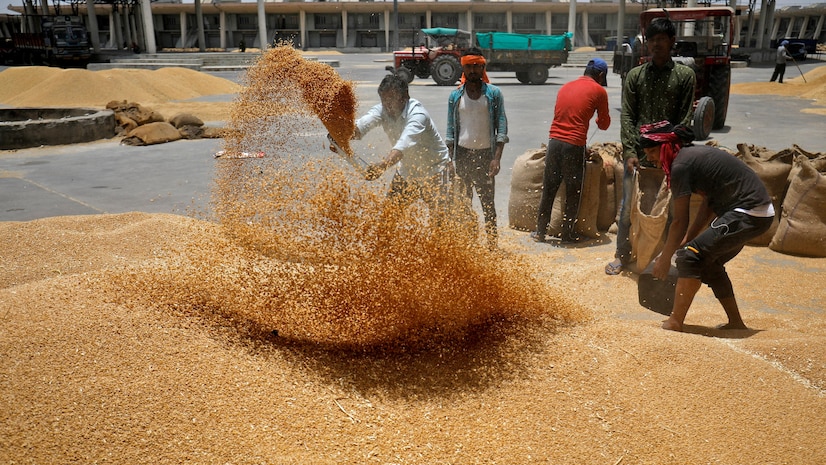
)
In 2022, India banned wheat exports after a surge in temperatures lowered output, even as export demand rose as the Russia-Ukraine conflict led to a global shortfall (Reuters)
Indian wheat inventories held in government warehouses dropped to 9.7 million metric tons, the lowest since 2017, after two straight years of low crops prompted the state to sell record volumes to boost domestic supplies and lower local prices.
Wheat reserves in state stores totalled 9.7 million tons at the start of this month, down from 11.7 million tons in March 2022, the state-run Food Corporation of India said.
Despite the tight supply, the government has resisted calls to encourage imports by cutting or removing the current 40% tax, or by directly buying from top suppliers such as Russia.
Instead, it has dipped into state reserves to sell wheat to bulk consumers, such as flour millers and biscuit-makers, to try to curb domestic prices that have been above the state-fixed minimum buying price since the last crop was harvested.
In 2020, India started offering free wheat to millions of Indians to stave off food shortages during pandemic lockdowns.
But lower wheat output in 2022 and 2023 meant inventories at state warehouses recovered more slowly than expected.
In 2022, India banned wheat exports after a surge in temperatures lowered output, even as export demand rose as the Russia-Ukraine conflict led to a global shortfall.
The ban failed to stop prices from rising, and trade and industry officials said last year’s crop was lower than the government’s estimates of a record 110.6 million tons.
In another sign of lower output, the government bought 26.2 million tons of wheat from local farmers last year, compared with its target of 34.15 million tons.
To replenish stocks, the government can increase procurement from farmers or allow imports, said a New-Delhi based trader.
First Published: Mar 12 2024 | 4:48 PM IST




